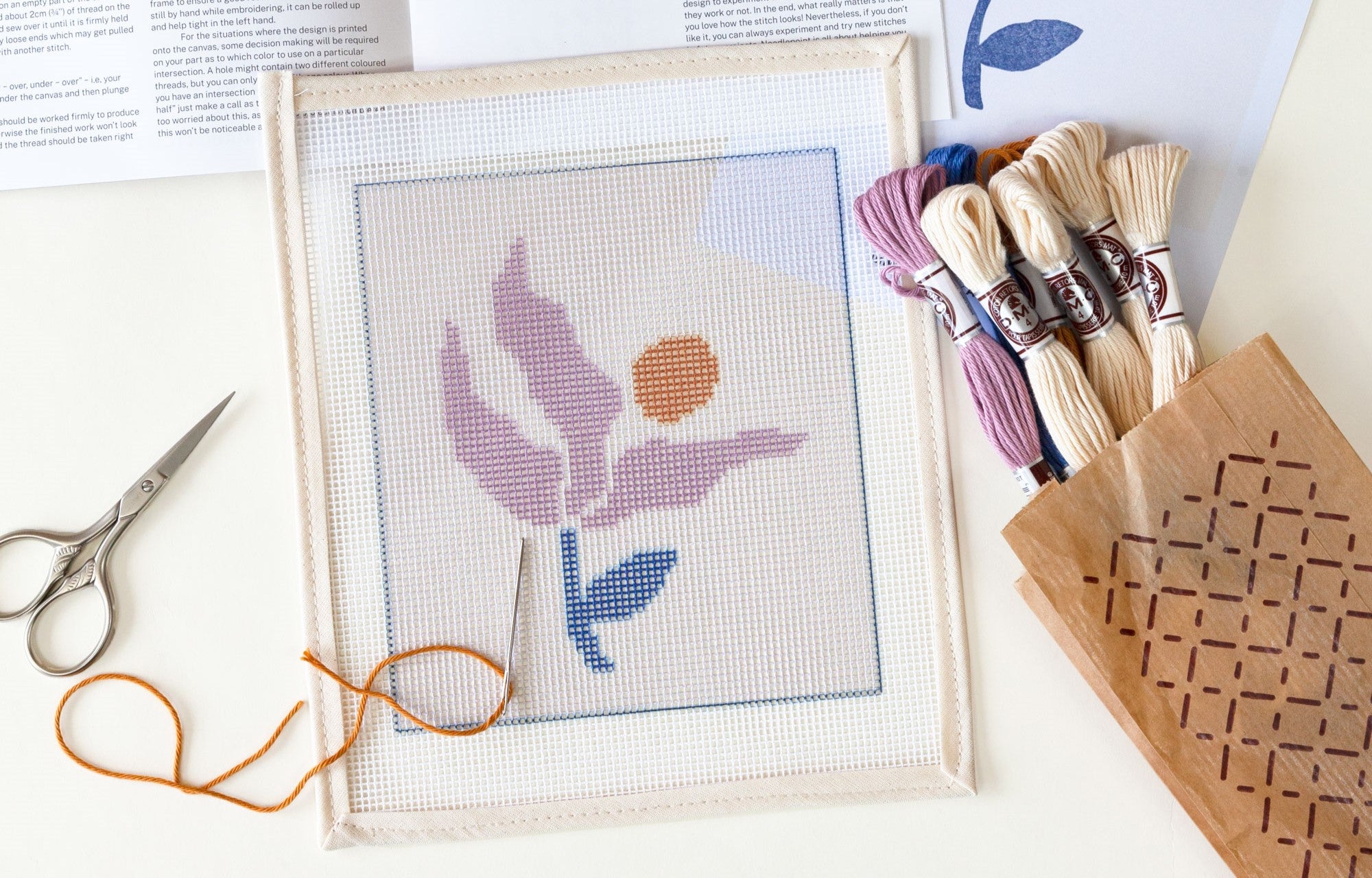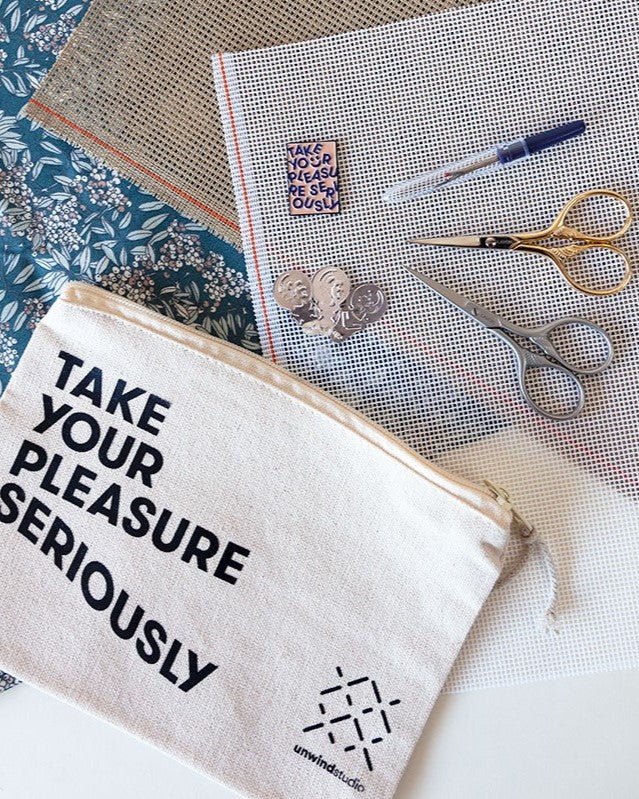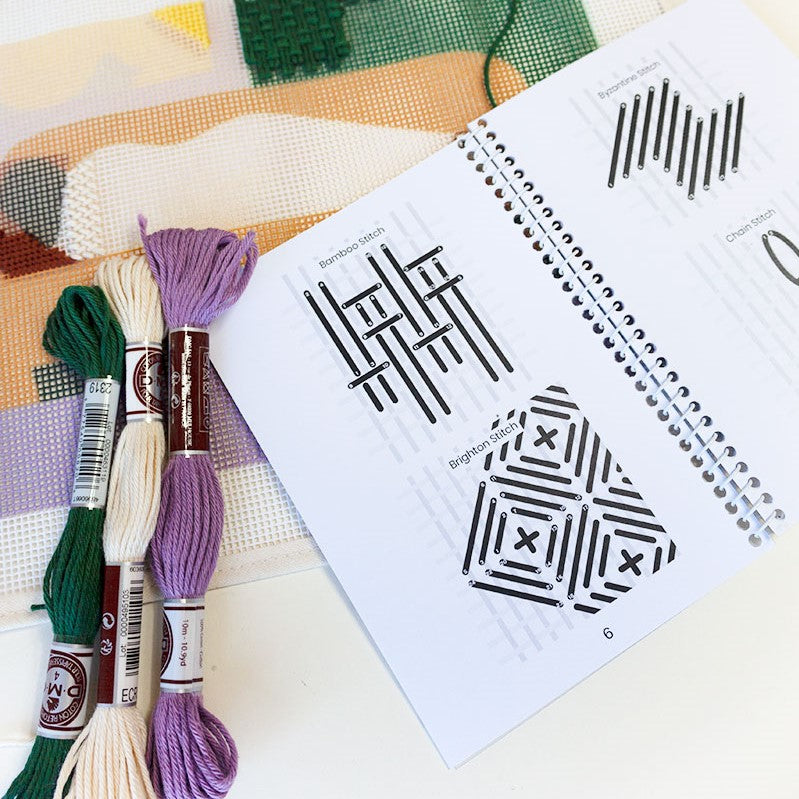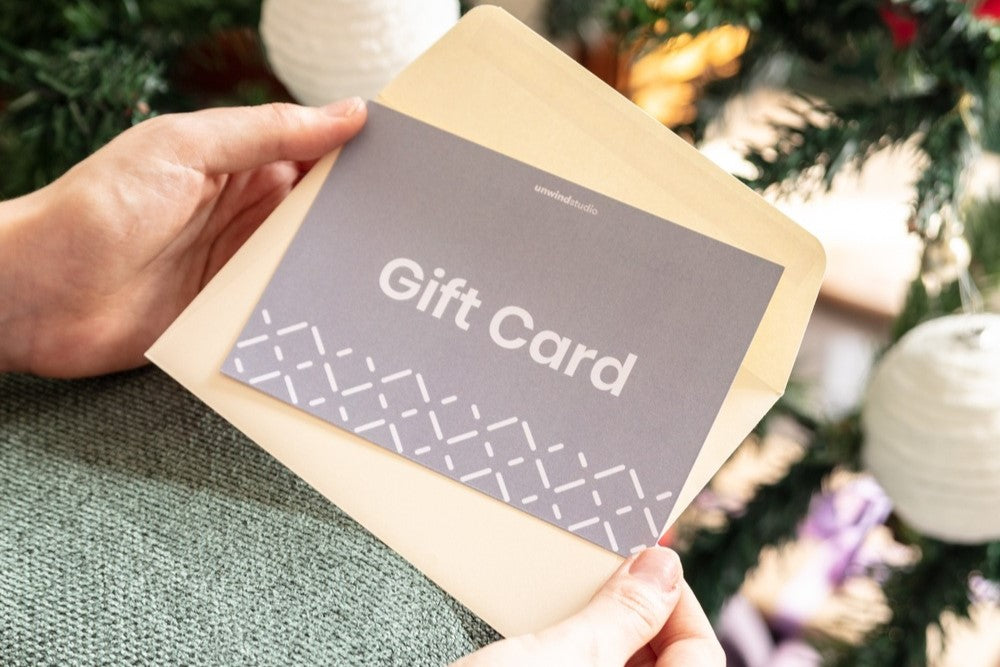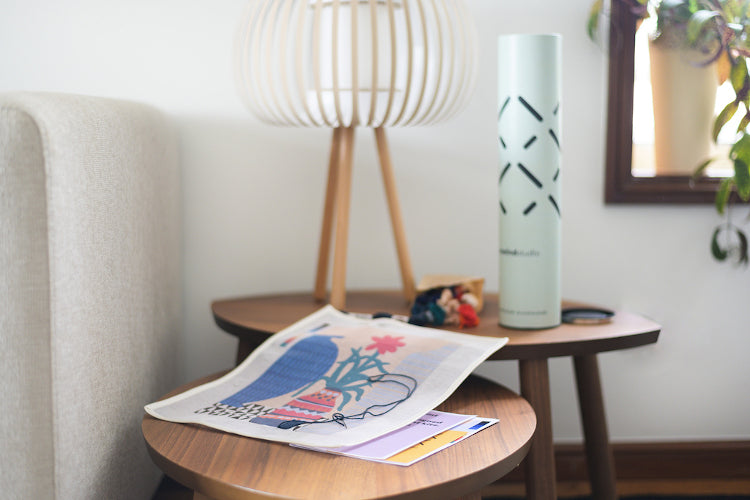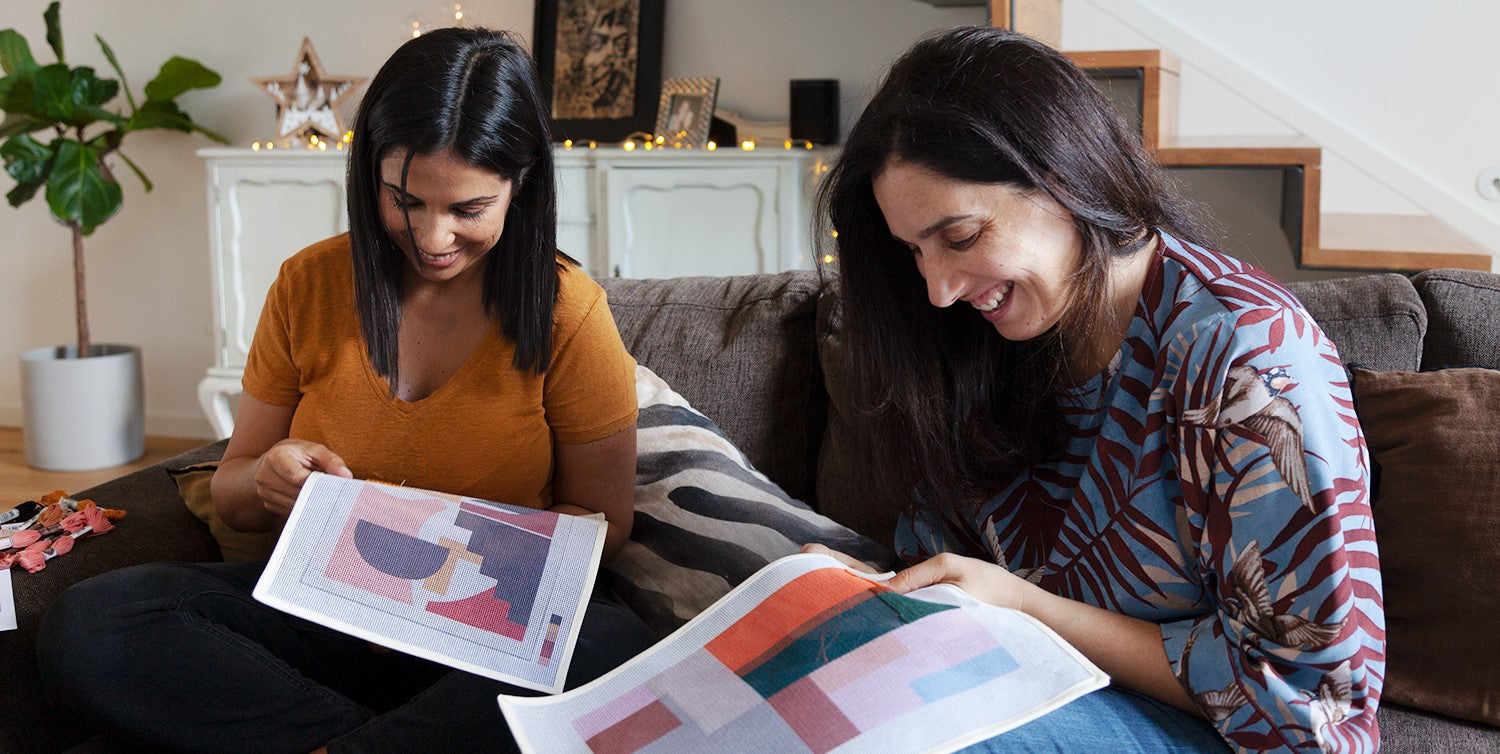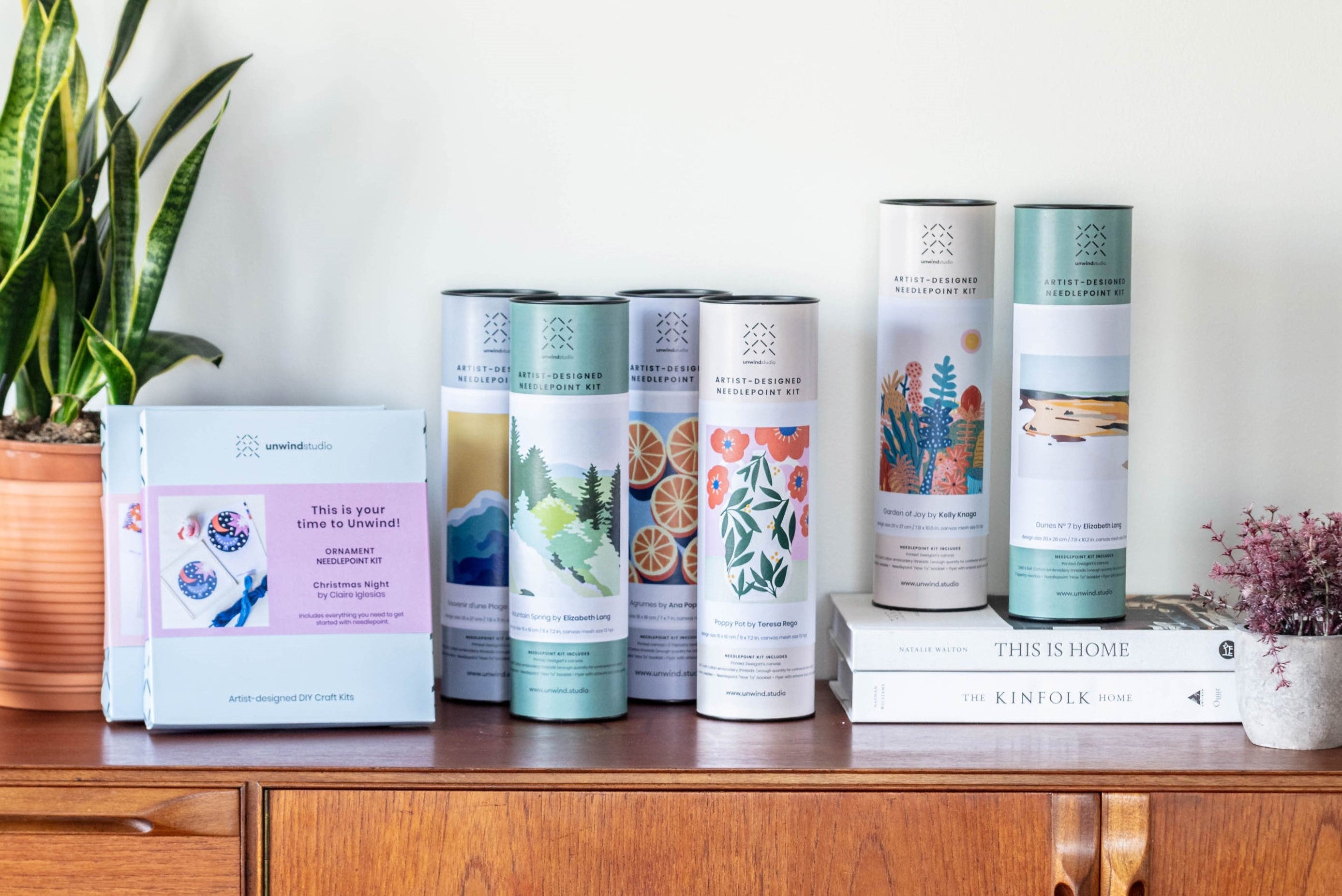How to Finish a Needlepoint Key Fob: Video & How to
Needlepoint is a delightful craft that allows you to create unique and personalized pieces, and a needlepoint key fob is one of the most functional and charming items you can make, while also being super easy and quick to stitch. In this tutorial, we’ll guide you through the process of finishing your needlepoint key fob, incorporating some important tips to ensure a professional and durable finish.

How to Finish a Needlepoint Key Fob - Video Tutorial
Follow along with our video tutorial for a visual guide to completing your key fob. This video covers each step in detail, making it super easy to follow!
How to Finish a Needlepoint Key Fob with Double Binding - Video Tutorial
In this version, you'll stitch the two halves of the key fob together, eliminating some steps and materials, as well as the need to use a sewing machine.
This is an easier and quicker way of finishing your project. It all comes down to what finished version you like the most!
Materials You’ll Need
Before diving into the instructions, gather the following materials:
- Completed needlepoint canvas for the key fob
- Key fob hardware
- Fusible web (like Heat N Bond) or similar product
- Fabric or Cotton Twill Tape
- Scissors
- Iron
- Sewing machine (or you can sew by hand)
- Towel or pressing cloth (to protect your needlepoint)
- Pliers (for closing the hardware)
- Protective cloth (to avoid scratching the hardware)
Step-by-Step Instructions
-
Block Your Canvas
- Before starting, block your canvas to ensure that the edges are straight and the corners are 90 degrees. This step is crucial for achieving a neat and professional finish.
-
Prepare and Bind the Edges
- Take your stitched canvas and use a binding stitch on the two long sides of the key fob. While this step isn't mandatory, it provides a clean edge that makes the finishing process easier.
- Trim the excess canvas, leaving half an inch seam allowance all around. This allowance prevents unraveling while ensuring that the stitching remains intact.
-
Trim the Corners and Seams
- Trim the seams and corners carefully so that no canvas overlaps when you fold the raw edges to the back. This will give a smoother finish when the key fob is assembled.
- Trim the seams and corners carefully so that no canvas overlaps when you fold the raw edges to the back. This will give a smoother finish when the key fob is assembled.
-
Prepare the Backing Material
- Cut your webbing or fabric backing slightly shorter than your needlepoint area, leaving about a 1/2" gap. This adjustment is necessary because when you fold the key fob, the interior (the webbing) needs to be shorter to accommodate the curve without causing shirring at the edges.
- Cut your webbing or fabric backing slightly shorter than your needlepoint area, leaving about a 1/2" gap. This adjustment is necessary because when you fold the key fob, the interior (the webbing) needs to be shorter to accommodate the curve without causing shirring at the edges.
-
Attach the Backing: Two Methods
-
Method 1: Basting Tape
- Apply basting tape to the very edges of the wrong side of the webbing. If your webbing has no clear right or wrong side, either side will work.
- Remove the protective film from the basting tape. While keeping both the needlepoint and webbing slightly curved, carefully align and press the edges together. This method helps maintain even seams and is especially useful for long, straight edges.
-
Method 2: Fusible Web (Heat N Bond)
- Place the fusible web on the back of your needlepoint canvas, webby side down. Cover with a towel or pressing cloth and apply pressure with an iron for about 15 seconds to bond the webbing to the canvas.
- Once secure, remove the paper backing from the fusible web, place your fabric on top, and repeat the ironing process to attach the fabric to the needlepoint.
-
-
Sew the Edges
- After attaching the backing, sew the edges to secure the fabric further. If you're using a sewing machine, make sure to use clear thread on top and a thread matching your backing material in the bobbin. Sew with the needlepoint side facing up, as the backing fabric is usually thinner and could shift if placed on top.
-» if you're not comfortable with sewing yet, watch our step-by-step tutorial to learn how to do it the easy way!
- After attaching the backing, sew the edges to secure the fabric further. If you're using a sewing machine, make sure to use clear thread on top and a thread matching your backing material in the bobbin. Sew with the needlepoint side facing up, as the backing fabric is usually thinner and could shift if placed on top.
-
Trim Excess Backing
- Trim any excess fabric or webbing so that it aligns perfectly with the needlepoint edges. This step ensures a neat finish when you fold and attach the hardware.
- Trim any excess fabric or webbing so that it aligns perfectly with the needlepoint edges. This step ensures a neat finish when you fold and attach the hardware.
-
Attach the Hardware
- Align the hardware with the short ends of your needlepoint piece. Squeeze these ends into the hardware, ensuring everything is properly positioned.
- Align the hardware with the short ends of your needlepoint piece. Squeeze these ends into the hardware, ensuring everything is properly positioned.
-
Secure the Hardware with Pliers
- Using pliers and a protective cloth to avoid scratching, pinch the hardware closed. Apply firm pressure to ensure that the hardware is securely fastened and won't come loose with use.
Conclusion
Your needlepoint key fob is now complete! This small yet charming accessory is not only practical but also a wonderful way to showcase your needlepoint skills. Whether it's for personal use or a handmade gift, your finished key fob is sure to be a cherished item.
We hope this tutorial has been helpful. Be sure to explore our other tutorials and blog posts for more needlepoint projects and crafting inspiration. Happy stitching!


